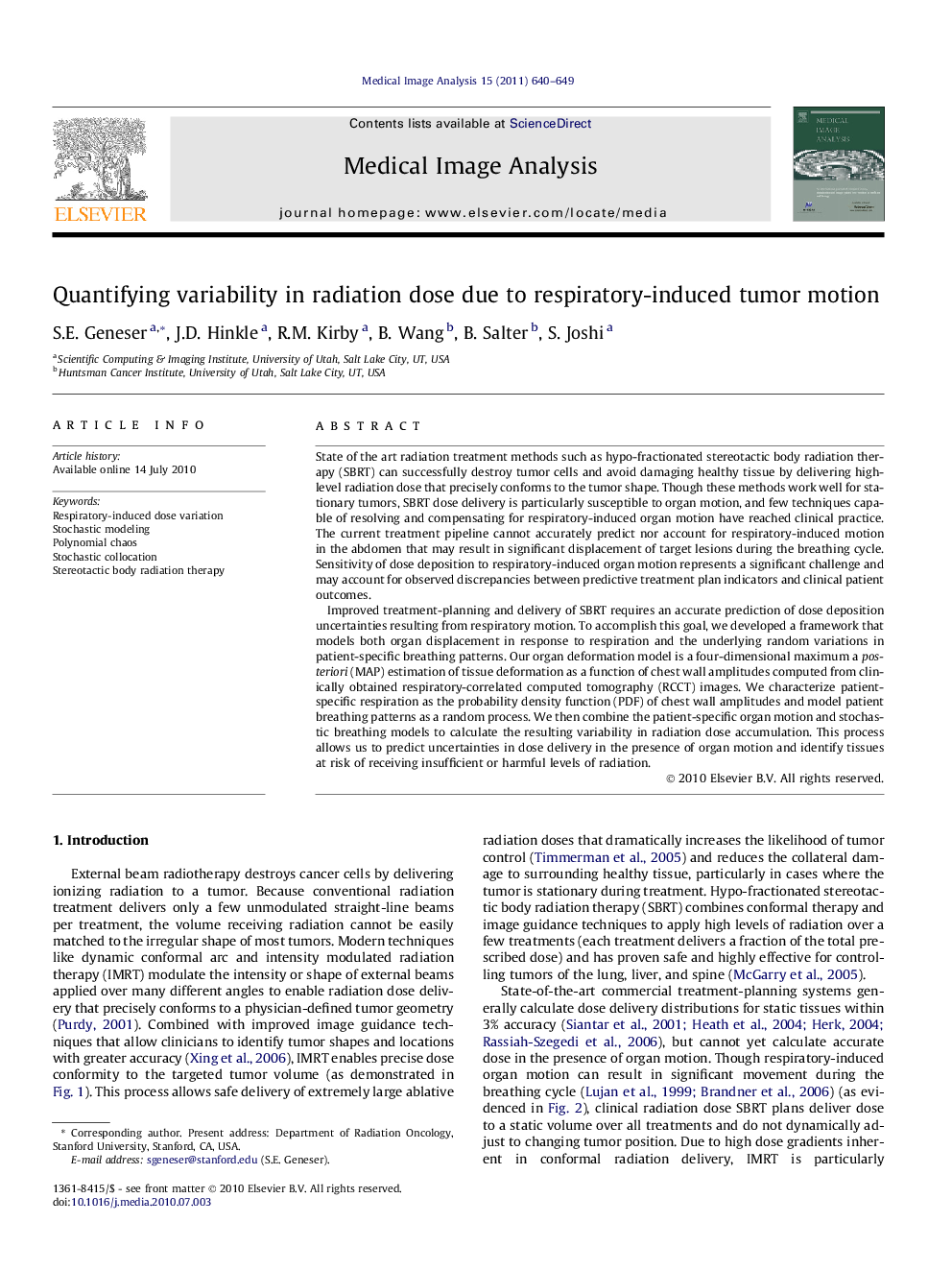| کد مقاله | کد نشریه | سال انتشار | مقاله انگلیسی | نسخه تمام متن |
|---|---|---|---|---|
| 445212 | 693154 | 2011 | 10 صفحه PDF | دانلود رایگان |

State of the art radiation treatment methods such as hypo-fractionated stereotactic body radiation therapy (SBRT) can successfully destroy tumor cells and avoid damaging healthy tissue by delivering high-level radiation dose that precisely conforms to the tumor shape. Though these methods work well for stationary tumors, SBRT dose delivery is particularly susceptible to organ motion, and few techniques capable of resolving and compensating for respiratory-induced organ motion have reached clinical practice. The current treatment pipeline cannot accurately predict nor account for respiratory-induced motion in the abdomen that may result in significant displacement of target lesions during the breathing cycle. Sensitivity of dose deposition to respiratory-induced organ motion represents a significant challenge and may account for observed discrepancies between predictive treatment plan indicators and clinical patient outcomes.Improved treatment-planning and delivery of SBRT requires an accurate prediction of dose deposition uncertainties resulting from respiratory motion. To accomplish this goal, we developed a framework that models both organ displacement in response to respiration and the underlying random variations in patient-specific breathing patterns. Our organ deformation model is a four-dimensional maximum a posteriori (MAP) estimation of tissue deformation as a function of chest wall amplitudes computed from clinically obtained respiratory-correlated computed tomography (RCCT) images. We characterize patient-specific respiration as the probability density function (PDF) of chest wall amplitudes and model patient breathing patterns as a random process. We then combine the patient-specific organ motion and stochastic breathing models to calculate the resulting variability in radiation dose accumulation. This process allows us to predict uncertainties in dose delivery in the presence of organ motion and identify tissues at risk of receiving insufficient or harmful levels of radiation.
Journal: Medical Image Analysis - Volume 15, Issue 4, August 2011, Pages 640–649